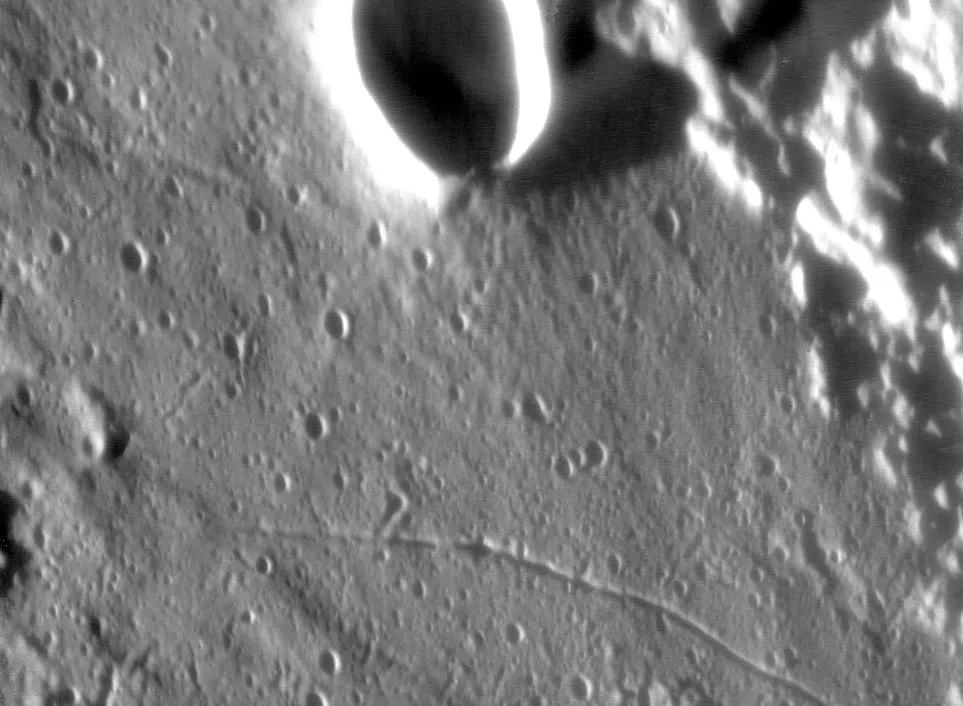A common question is whether the Apollo 11 landing site on the Moon can be seen from Earth. Unfortunately the landing craft are too small to be seen by even the largest Earth-based telescopes, but you can still see the spot where the Lunar Module touched down on 20 July 1969.
If you want to try and photograph it, read our guide on how to photograph the Moon.
And if you want to see them all, read our guide on how to see all the Apollo landing sites on the Moon.
The Apollo 11 landing site
- Size 300kmx300km (area described)
- Longitude/latitude23.5º E, 0.7º N
- Best time to see 5 days after new Moon and 4 days after full Moon
- Minimum equipment 200mm telescope
Apollo 11’s Tranquillity Base is, as its name suggests, in the Sea of Tranquillity, Mare Tranquillitatis. The dark lava of this 700km diameter sea is easily visible to the naked eye, but a telescope is required to explore the vicinity of the landing site.
A large amateur telescope may typically resolve features as small as 600-700 metres across.
A test shot taken by Yepun, one of the four 8.2m telescopes located at Paranal in Chile, part of the Very Large Telescope facility, resolved features as small as 130m across, close to the telescope’s resolving limit.
Both figures are a long way off the 4.2m width of the body of the Apollo Lunar Module’s descent stage, which was left on the surface.
To see the Apollo 11 base, you’d currently need to have a spacecraft in lunar orbit or actually go to the site.
The Lunar Reconnaissance Orbiter has successfully returned images of all the Apollo sites, showing the descent stages, equipment, walking trails and, where applicable, tracks made by the lunar rovers.
The LRO even found evidence of an underground cave on the Moon near the Apollo 11 landing site.
Despite not being able to see the spacecraft themselves, it is still possible to explore the landing sites and get a feel for where they are located on the lunar surface.
In the southwest ‘corner’ of the mare is a pair of similarly sized craters, 31km Ritter and 30km Sabine.
Both craters have a remarkably similar appearance showing relatively flat floors and steep, well-defined rims.
Imagine a line from the centre of Ritter to the west, through the centre of Sabine. It hits the boundary of Tranquillitatis at a point where the highland edge appears scalloped out around a smaller crater on the mare surface, 7km Moltke.
This is a bowl-shaped depression with a bright ejecta collar which really helps it stand out against its dark lava surroundings.
Look at the scalloped mare boundary feature and take note of its east-west dimension; it’s about 60km across.

Return to Moltke and head north by a little over this distance, veering slightly to the east as you go.
Here you’ll find 5km Armstrong, named after the first man to step foot on the Moon, Neil Armstrong.
The other crew members Buzz Aldrin and Michael Collins also have craters in the region and these can be located by drawing a line between Armstrong and the centre of Sabine.
From Armstrong, Collins is a 3km crater 38km along this line. Keep going for another 50km and you’ll arrive at 3km Aldrin.
Just south of the mid-point between Aldrin and Collins is a triangle of similar sized depressions, 3km Sabine C being the northernmost of the three.
A line drawn between the lower two, running west to east and extended for virtually the same distance again, will have you looking directly at the historical site of Tranquillity Base, where the Apollo 11 lunar module Eagle landed at 21:17 BST (20:17 UT) on 20 July 1969.
If you observe or photograph the Apollo 11 landing site, share your experiences and images with us by emailing contactus@skyatnightmagazine.com.
This article originally appeared in the August 2019 issue of BBC Sky at Night Magazine.
